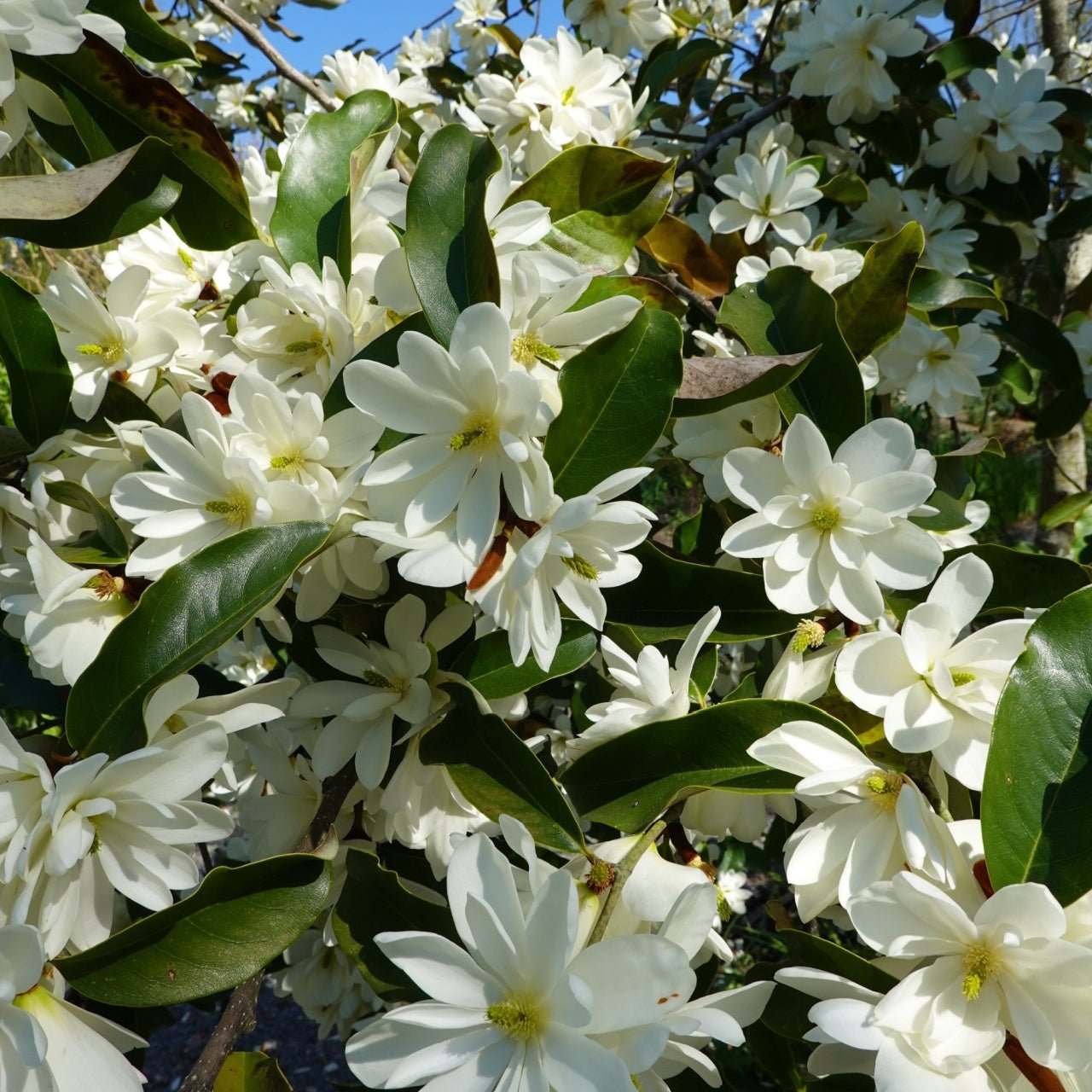Ann Magnolia: A Flowering Delight for Your Garden
The Ann Magnolia is a sight to behold when springtime rolls around. Its deep pink to reddish-purple blooms steal the show, bringing a burst of color that'll make any garden feel like a masterpiece. This flowering tree, part of the Little Girl series of magnolias, is cherished for its compact size and low-maintenance charm. This one fits the bill perfectly, adding beauty and elegance to your landscape.
What makes the Ann Magnolia so unique is its adaptability. It's not fussy about its surroundings and fits right into most gardens, big or small. Standing at a modest 8 to 10 feet tall when mature, it won't overtake your space but will certainly command attention. Its blossoms, shaped like tulips, appear in early spring, often before the leaves emerge, making the vibrant flowers even more striking. And, if the weather's right, it might surprise you with a second round of blooms later in the summer.
Planting and Caring for Ann Magnolia
Planting an Ann Magnolia is easy if you know what it likes. It thrives in well-drained, slightly acidic soil but is forgiving enough to adapt to average garden conditions. Pick a spot with full sun to partial shade; too much shade might not produce the floral display you're hoping for.
Once planted, this magnolia is a breeze to care for. It doesn't demand constant attention or excessive pruning. Water it regularly during the first year to establish strong roots, then let it settle into its rhythm. Fertilize in spring to encourage those show-stopping flowers.
One of the joys of the Ann Magnolia is its resilience. Unlike some magnolias, it's tolerant of colder climates, making it a favorite in zones 4 through 8. Its blooms resist frost better than most, so you won't lose all that beauty to a late cold snap. Its compact size makes it perfect for a front yard centerpiece or a highlight in a more miniature garden.
Undoubtedly, the Ann Magnolia brings a timeless charm to any landscape. With its eye-catching flowers, easygoing nature, and year-round appeal, it's a tree that delivers beauty without asking for much in return.
Ann Magnolia - also known as Little Girl Hybrid Magnolia- is a cross between Magnolia Liliflora and Magnolia Stellata.

It is a deciduous shrub or a tree that can grow up to 12- 15 feet in height and 8- 10 feet in width.
The flowers bloom from the spring season till fall, and their bright color makes the landscape lively and attractive. Ann Magnolias can be used in the home garden as a shrub border or even as a focal point specimen in the area. The vibrant flowers blend in well with almost any landscape or design that you have in mind.
Ann Magnolia grows well in sun or partial shade and well-drained soil. It can be planted in sandy, loamy, or clay soil. These plants need little care and maintenance, which makes them ideal for a home garden. Ann Magnolia thrives in acidic soil, which is fertilized with the correct quantity of fertilizers. There are several ways of planting Ann Magnolia. It can be grown by sowing the seeds in fall, grafting in winters, and propagating in summers. It can also be grown by layering the plant.
You should prune the plant annually to remove damaged branches. Pruning also helps in maintaining the shape of the plant. Like most other plants, Ann Magnolia is susceptible to diseases, pests, and insects. To provide healthy growing conditions, make sure to get rid of the pests and insects that can harm and damage the plant. Fungal spots, Powdery Mildew, and bacterial infection are the common plant diseases that can affect your plant, so use preventive chemicals in the prescribed quantities.
Given the fact that Ann Magnolia needs less maintenance, it is a good option for beginners or, for that matter, anyone who is looking for a beautiful and bright-colored flowering shrub for their home garden.
TN Nursery sells other magnolias, including Sweet Bay Magnolia and Magnolia Jane.
A Delicate Beauty with Multifaceted Benefits
The Ann Magnolia tree (Magnolia x 'Ann') combines striking ornamental value with hardiness and versatility, making it a favorite among gardeners and landscapers. It emerged from the crossbreeding of star magnolia (Magnolia stellata) with lily magnolia (Magnolia liliiflora), displaying multiple beloved magnolia traits. The Ann Magnolia tree delivers numerous advantages thanks to its elegant pinkish-purple flowers, compact size, and ability to adapt to various environments.
The Ann Magnolia tree stands out primarily because of its exceptional decorative attractiveness. The tree produces deep-pink to purple flowers, which emerge in early spring before any leaves develop to create an exquisite floral display. The flowers unfold in a manner that resembles delicate tulips and display multiple soft petals. This tree's vibrant display of colors and shapes adds romantic charm and enchantment to gardens, patios, and front yards. After spring, the Ann Magnolia tree keeps producing irregular flowers that can also emerge during summer. The extended ornamental season benefits from the Ann Magnolia, which continually attracts attention through its beautiful floral display.
Ann Magnolia displays outstanding adaptability by flourishing across diverse climatic conditions. The Ann Magnolia survives in USDA Zones 4 through 8, indicating it tolerates colder winters better than other magnolia species. The hardiness of the Ann Magnolia makes it accessible to a broader range of gardeners who can enjoy this tree without concerns about severe temperature changes. Ann Magnolias are adaptable to soil conditions ranging from slightly acidic to neutral, allowing them to thrive in diverse landscape settings. Ann Magnolias thrive when exposed to full sun conditions or partial shade, but they produce fuller blooms with a minimum of four to six hours of sunlight daily.
The Ann Magnolia supports the health of local wildlife through its ecological advantages. Its colorful flowers and fruiting parts attract pollinating insects like bees and butterflies during springtime, helping maintain environmental balance. Birds use the tree branches for shelter as their canopy becomes denser through maturity. Planting an Ann Magnolia supports local biodiversity while promoting the health of different species in the area.
The Ann Magnolia stands out for its compact, mature size, which reaches between 8 and 10 feet in height and width. The Ann Magnolia tree's moderate size makes it suitable for multiple garden designs, from urban spaces to cottage gardens and substantial container arrangements. Its small stature results in less complicated maintenance and pruning work than required for more prominent magnolia types. The Ann Magnolia exhibits minimal pest and disease problems as a deciduous shrub or small tree, and when gardeners provide proper care, it allows for little maintenance throughout the year.
The Ann Magnolia tree enhances property value through its enduring beauty and minimal care requirements. Its spring blossoms create instant visual appeal for homes, which sellers find particularly beneficial. The Ann Magnolia tree adds to sustainable landscaping through its environmental benefits and flexible nature beyond its visual appeal.
The Ann Magnolia tree provides numerous advantages that surpass its mere decorative beauty. It combines impressive durability with adaptability to local wildlife conditions and demands minimal maintenance. Beginner gardeners and professional landscapers will see the Ann Magnolia as a valuable addition to outdoor spaces due to its lasting appeal and ecological advantages.
Read more

There are many, many different types of ferns. Ferns make the riverbanks along lakes, streams, and ponds look beautiful and give them their gorgeous beauty. Ferns make a great addition to any strea...

What's A Hummingbird's Favorite Color?Why are hummingbird feeders red? Because they're especially attracted to that shade. Forget boiling sugar water or pre-made syrups from the store. Plant a few ...




